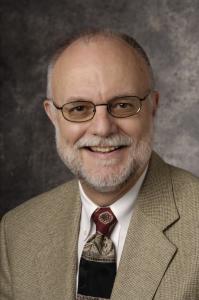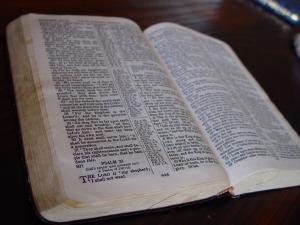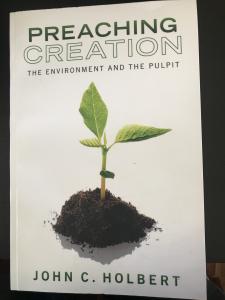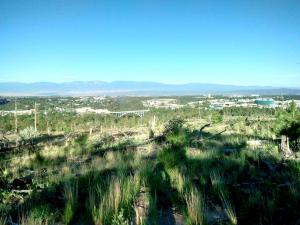 In May, rather out of the blue, I was asked to lead a retreat for a church in late August. The United Church of Los Alamos, I was told, has a yearly retreat, and I surmised that someone who was originally scheduled to be the leader had had to cancel, and I was engaged as a substitute. Being asked like this is never a problem for me, as if I was some sort of second-best option. Over my long career of retreat leadership, I have more than a few times been invited after a late cancellation. Some of those experiences have been among my best events, so, if I am free during the time, I eagerly accept the call. And since this invite was from a church in northern New Mexico, one of the world’s most beautiful places, and not far from a cabin our family has had for 30 years, I was especially happy to be asked.
In May, rather out of the blue, I was asked to lead a retreat for a church in late August. The United Church of Los Alamos, I was told, has a yearly retreat, and I surmised that someone who was originally scheduled to be the leader had had to cancel, and I was engaged as a substitute. Being asked like this is never a problem for me, as if I was some sort of second-best option. Over my long career of retreat leadership, I have more than a few times been invited after a late cancellation. Some of those experiences have been among my best events, so, if I am free during the time, I eagerly accept the call. And since this invite was from a church in northern New Mexico, one of the world’s most beautiful places, and not far from a cabin our family has had for 30 years, I was especially happy to be asked.
And the fact that the retreat participants will be from Los Alamos was particularly intriguing. I have visited the city, some 45 miles northwest of Santa Fe, only once before, so was eager for a return. This is really one of the unique communities in the country, made so by its quite extraordinary past and its remarkable present. Many know that it was at Los Alamos that the world’s first atomic bomb was conceived, built, and executed in the years 1943-45. The famous test of the device was held about 200 miles south of the city at a bombing range on July 16, 1945. As the bomb exploded, lighting the early dawn that morning, the director of the project, J. Robert Oppenheimer, uttered fateful words from the Bhagavad Gita: “ Now I am become death, the destroyer of worlds.” Indeed. Several weeks later, two similar devices were exploded in Japan at Hiroshima and Nagasaki, ending World War II, ushering in the atomic age and creating a terrifying vision of potential world destruction.
The super secret modern city of Los Alamos (“the cottonwoods” or “the junipers” in Spanish) was literally built from practically nothing in several canyons with only one road in and out in the early 1940’s. The 6,000 people who were recruited to create the bomb were not allowed to speak to anyone during their service about what they were doing in their isolated community. All trucks bringing materials for construction for buildings or instrumentation for scientific work were marked only generically, and in barely more than a few months a rather shoddy cluster of buildings rose from the desert sands. Many of the world’s great minds were assembled to perform the work, led by the brilliant Oppenheimer. That it was done so quickly was a testament to his leadership, corralling such genius together, and to the urgency they felt from the Germans, who were after the same prize.
After the war ended in the two historic blasts, killing nearly 200,000 Japanese civilians, Los Alamos did not dry up. The Los Alamos National Laboratory (LANL) continues to this day, still doing very high level research into advanced weaponry as well as important work in environmental studies and peaceful uses of atomic energy.
Such a place, as one can imagine, is not free from controversy. The fact that the city itself was created by the federal government, employing its military right of eminent domain, expelling Native Americans from what many consider sacred land along with other settlers who had created a school on the site, has been a source of contention for decades. Also, there are notable sociological realities that raise eyebrows today. New Mexico is one of our nation’s poorest states, usually listed as 48th or 49th on such lists. On the contrary, Los Alamos is one of the wealthiest cities in America, its median income reaching nearly $100,000. By contrast, Espanola, a nearby city of nearly the same size (some 12,000), boasts a median income nearly $70,000 less. Also, Los Alamos has by most estimates the highest percentage of holders of PhD’s of any American city, nearly 13% of its population. In other words, Los Alamos is a distinct anomaly in its New Mexican context.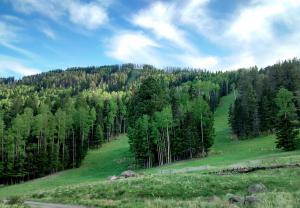
The LANL remains by far the city’s most important employer, drawing workers from as far away as Albuquerque (1 1⁄2 hours by car). It boasts a state of the art hospital, containing some 50 beds, in the center of town with a full range of surgical and general treatment services available. But because of its proximity as ground zero for significant nuclear research, it also is bedeviled by potential contamination from various sorts of radioactive materials generated by that research. There are near continuous protests of the potential for air, ground, and water defilement from this waste, and no safe solution has yet been forthcoming, though of course much work has been done, and continues to be done, on the dangerous problem. In short, Los Alamos is a city that offers huge opportunities for the richly educated, while presenting difficult issues for its inhabitants and those dependent on their specialized work who live nearby.
I plan to speak to those going to the retreat on questions of the Bible and the environment. As I have described several times in my blog posts, my central question concerns the Bible’s value for viewing our natural environment in ways that can help us foster our care for our planet. I continue to argue that the Bible has unfortunately largely been a negative factor when questions like mine are raised. This is true because serious readers of the Bible, among the very most prominent readers in the last century, have in my mind misread or underread the texts that can serve us well as goads to become better lovers of the earth. I am not a scientist, but a theologian and Bible lover, but I assume that many of my hearers at the retreat will be scientists and deeply committed to the precise methods of their disciplines. I hope they will come with open hearts and minds for the several ways that the Bible can serve as source for environmental hope, since we all face a dark catastrophe if we do not direct our very best efforts to the work of creation care. Come back here next week, and I will attempt to report to you what happened at this retreat. It will be held at Ghost Ranch, near Abiquiu, NM, the place where Georgia O’Keefe painted many of her iconic canvases. I very much look forward to my journey.
(Images from Wikimedia Commons)


